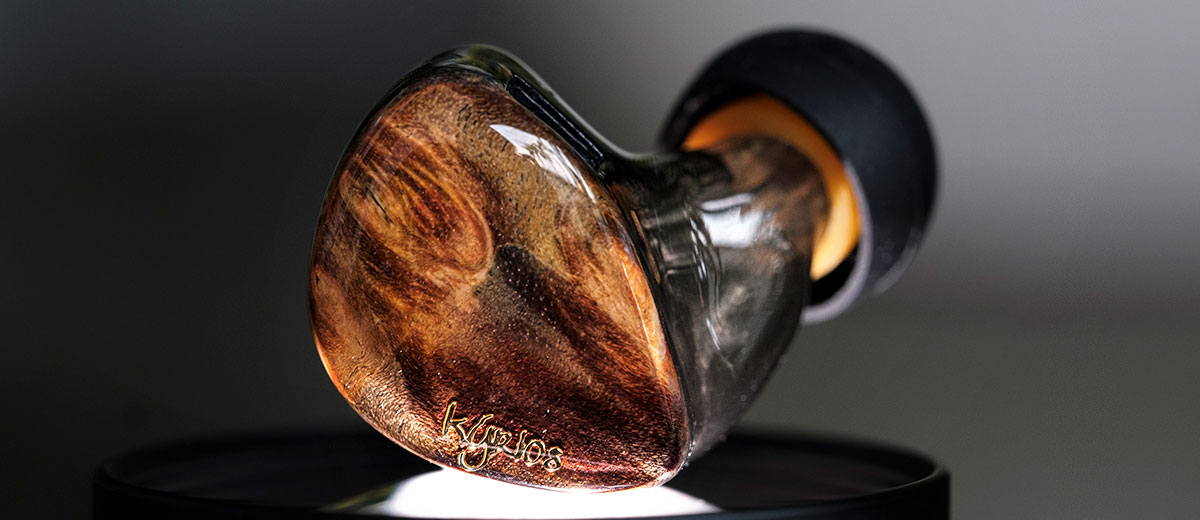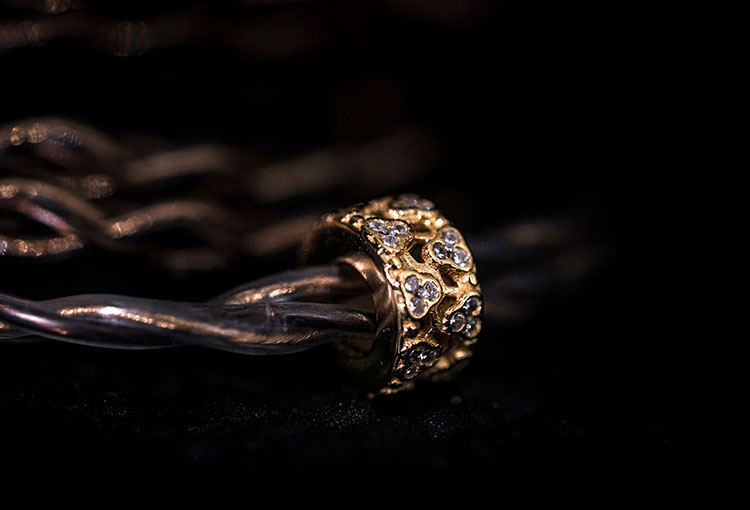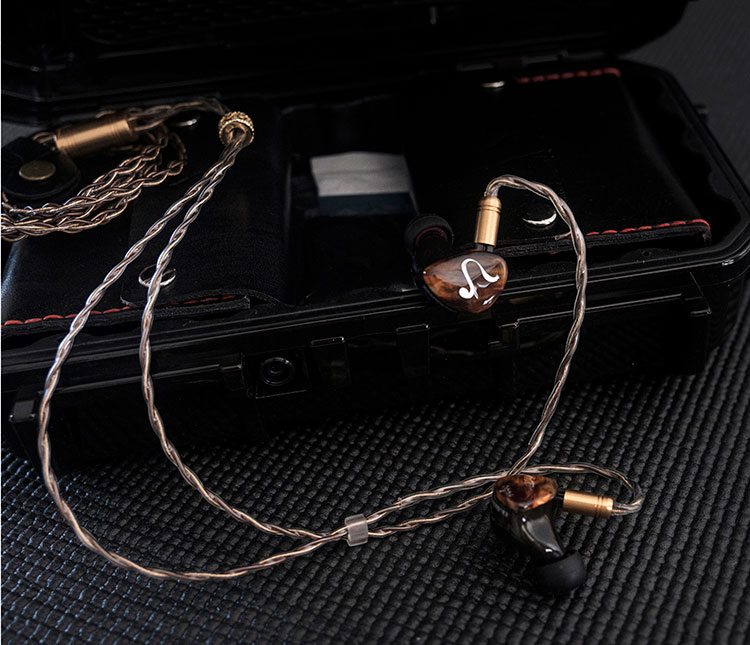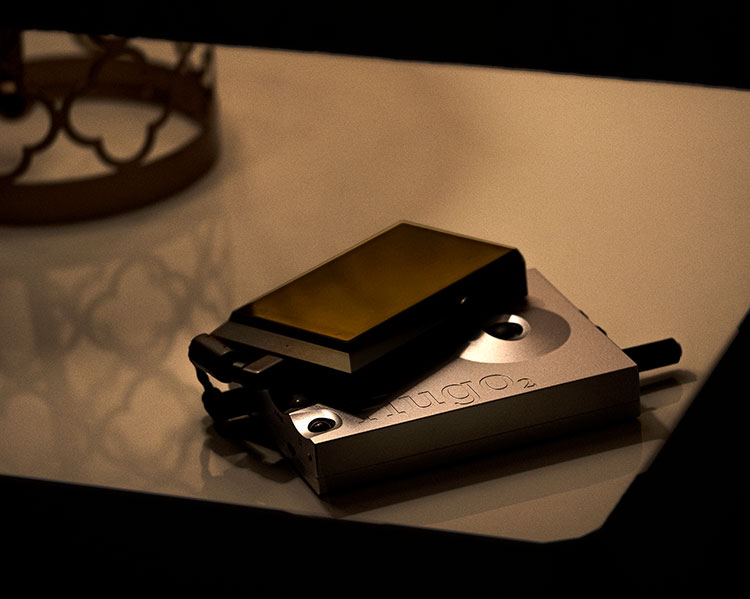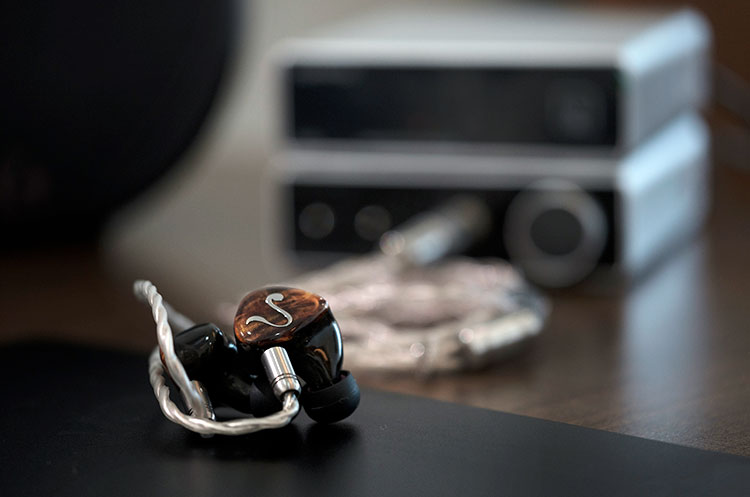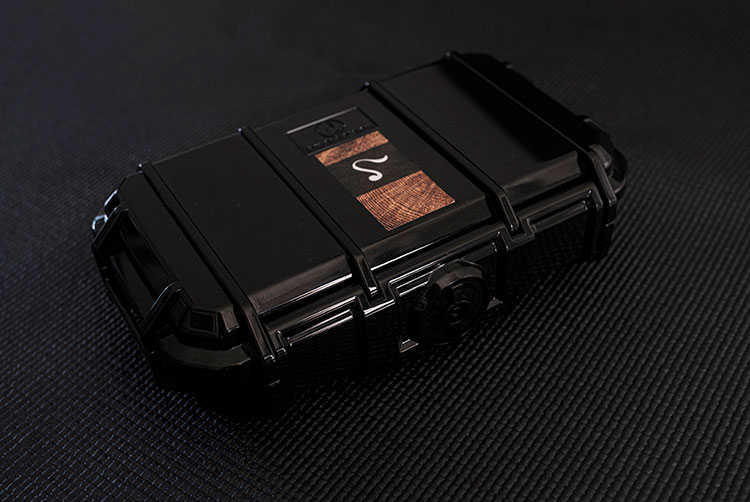The Aural Definition Kyrios Pro flagship Series comprises of two 6-driver electret-infused universal monitors, the Kyrios Pro, and the Kyrios Pro +. They are priced at $1800 & $2200 respectively.
Disclaimer: The Aural Definition Kyrios sent to us are samples in exchange for our honest opinion in this review. We thank the team from Aural Definition for giving us this opportunity.
To read more about IEMs we have reviewed before on Headfonics before, click here.
Note, this review follows our new scoring guidelines for 2021 which you can read up on here.
Ren and Matt of Aural Definition call the Kyrios, “A different experience for audio lovers.” To paraphrase, Ren added that he wanted to give music lovers an idea that there is a better way to enjoy their hobby than simply more bass.
Far be it for me to set out on a messianic quest to persuade every reader to his point of view. The beautiful, as well as the terrible thing in this hobby, is that whilst we can argue based on graphs and metrics, there is not a science in this world that can steer anyone clear of their preferences.
We simply want what we want. And our qualification and quantification of details? Mere justification to support our audio choices. That said, my own bias leans closer to a warm sound with a fetish for denser vocals than it does toward a flat studio monitoring tonality.
I like my music to have weightier human voices, with greater emphasis on how the subharmonics are presented.
Product Pitch
They are in-ear monitors: creations by a Filipino audio company, Aural Definition. The two actually share the same in-ear monitor design and specs. The Plus version comes with the more resolving Insigne (Gold, silver, and copper fused) cable while the standard is packaged with the Romagna (silver).
In Greek, the word Kyrios or Kurios typically means “lord” or “master”. In Biblical references, Kyrios is sometimes a translation for God. Tall order. Pardon the digression but Kyrios Plus must mean God Plus.
Tech Highlights
The Kyrios have 6 drivers in each cabinet. Matt and Ren are mum on the config, but I suspect that two balanced armatures drive the lows and another 3 handle the midrange frequencies, which leaves the lone electrostatic driver taking care of the trebles.
Much has been said about the multiple driver race in recent years. Generally, the numbers do not determine the quality of the sound; their implementation does.
In the case of the Kyrios, the crossovers as aimed by Matt and Ren work to keep the lows nimble and textured, midrange weighty without losing image sharpness, and the highs are extended in the typical electrostatic fashion: neither BA-edgy nor DD-soft.
Design
The driver cabinets of the Kyrios demo units are 3D printed, hand polished. Measuring 15.5 millimeters in width on its broadside, 14.8 mm from the faceplate to nozzle, and 22 mm in height, with a comfortably sized 6.4 mm nozzle, the Kyrios is very suited for long listening wear.
Adorning their faceplates are Ukrainian hybrid Stabwood, with the silver AD logo cradled in the middle. Nothing extraneous, nothing fripperous. It is stylishly elegant.
Cable
Then there is the duotone gold cable of the Kyrios Plus: The 26 AWG Sentire Insigne. What a stark contrast between simplicity and gaudiness. Positioned as the flagship twine of Aural Definition, Insigne earns the stripes and more. I will explain later.
On the standard variety Kyrios, buyers get the cryo-treated Litz silver Romagna version 2. Although both the nonplus and plus versions share the same in-ear monitor specs, their respective marriages to Romagna and Insigne not only produce different prices, but they also engender varying synergies and more importantly, sound.
On appearance alone, the silver Romagna v2 has a more toned-down look to the garish or blingy Insigne. Both come terminated in a handsomely made 2.5-millimeter TRRS plug, housed in surgical steel barrels. The heft of these barrels helps pull the cables down when worn in-ear.
Comfort & Isolation
As the Kyrios are universal molds, how they isolate and to a limited extent, how they sound, are dependent on the tips used.
I have enjoyed them with the Sony as well as the Comply foam tips. In my experiment with silicon tips, while more comfortable and certainly lighter in the ears, the resulting midrange body is noticeably sapped.
These shells are molded and produced to be smaller than most of the more renowned American brands. I suspect Ren purposely fashioned the shape to fit the smaller Asian ears. Thus, allowing for a longer duration in-ear without causing much discomfort.
Packaging & Accessories
Ren Lazibal of Aural Definition sent me the standard retail package of the Kyrios Plus. It came in a huge black Seahorse case. Inside are two cowhide pouches: one for the in-ear monitors, and another for the cable.
Together, are an assortment of accessories; 3 pairs of semi-translucent silicon tips, a cleaning kit, and a gratitude card.
This case is the first one I have seen of its kind from in-ear monitors manufacturers. It is big and premium. I can imagine audiophiles using this as their audio case. The thing can hold at least 6 IEMs without cramping for space, or make it hold an A&K Ultima with enough cargo space for a premium CIEM.
Sound Impressions
Summary
The Kyrios reminds me of the old AKG-K3003 in how it punctuates spaces between instruments. Aural Definition’s flagship images musical presentation more appropriately though even as it could not approximate the old hybrid K3003 in soundstage size.
Whereas the AKG puts the listener in the center and the music seemingly surrounds him, these AD creations have the musical presentation squarely in front of me.
In audio reviews, the words “transparent” and “reference” have been bandied and thrown about so often that if they were narcotics we would long ago have called them abused. Unfortunately, it is to the word transparent that I must now return. The Kyrios are about as transparent a pair of in-ears as I have heard.
They are not totally hard-tuned. Granting that there are technical drivers’ limitations, the 5 balanced armatures and lone electret driver are almost a pane of see-through glass.
Save for the weighty midrange subharmonics that are almost always present, the rest of the frequencies are largely dependent on the cable the Kyrios is married to.
Cable Influences
This is where I must digress and talk about the cables. You see, the standard Kyrios comes with the Romagna v2 (silver) cable while the more expensive Kyrios Plus is strung with the Sentire Insigne (gold, silver, and copper fused).
Arguably, what makes the Kyrios a “plus” is the Insigne. Attach that cable to any IEM and it invariably alters the sound.
Thus, in describing the sounds of the Kyrios, I must preface my impressions with this caveat — that the difference in sound I am describing is as much about the cables as it is about the synergy between cable and drivers.
Generally, music is more midrange-focused when enjoyed out of the Kyrios with the Romagna cable. Whilst both are warm sounding, the breadth of the human vocals takes on a larger space in the Romagna than in the Sentire. This must not be confused with density or midrange weight. The breadth or spread of the human voice is but a limited aspect of the midrange.
Both cables give justice to the density of the human voice. It is only in the wideness of the push that they distinguish from each other. If we have to reduce this to a gradation judgment, then yes, the Romagna is warmer and certainly less bright than the Sentire Insigne.
Staging
If we measure the vocal range on a horizontal plane, the left to right space it occupies is larger with the Romagna than with the Insigne. Given this marked variance in midrange push, anyone with a slightly favorable leaning towards warmer vocals should find the Romagna a more appealing choice.
That said, the image suffers a bit. Giving more space to the vocalist inevitably skews up the sonic space for other instruments. Thus, the fixity of the image of instruments and vocalists cannot help being sacrificed in the altar of rendering the human voice larger.
Conversely, even as it retains the density of the human vocals, the Insigne-equipped Kyrios do have them trimmed.
Spatial cues between voices and instruments step-up dramatically. And suddenly, like a window opening, brightness breaks in, and air flows giving the entire sonic space a more three-dimensional presentation.
Just for kicks, I tried a cheap OCC cable on the Kyrios. Predictably, midrange assumes more heft and looseness but the midbass gets the biggest boost. Upper midrange frequencies, when occasioned, get grainy, hot, and sibilant. Roll-offs occur early on both ends.
With the coupled silver Romagna cable, longer extension delays the roll-off but the midbass is tidied up with clearer midrange, though still fatter than when wed to the Insigne.
Cable Variations
Now adequacy is understandably subjective. In Duran Duran’s A View To A Kill, the Romagna consistently pushes out beefier and wider vocals with less air to my ears whilst the Insigne images sharper with a whetted and airier tail end.
For tracks like this, the Kyrios, over its more expensive sibling, the Plus, seems a more fitting, more “adequate” medium through which music may be enjoyed. The contrasting thin and thick voices between women and men are starker in Kyrios Plus than in the standard Kyrios.
Peaks and valleys in Haley Loren’s rendition of A Whiter Shade of Pale, for instance, are more pronounced in the Plus than in the vanilla Kyrios. Layering (sans Hugo 2) too, is more perceptible in the former than in the latter.
Kyrios +
As repeated tests have borne out, audiophile recordings where midbass body isn’t a must to fill the soundscape, the Kyrios Plus generally guarantees a more satisfying listen. There is simply more dramatic ebb and flow out of the Kyrios Plus to enjoy.
Cherub Rock by Smashing Pumpkins comes off as more intimate, with more palpable midbass and the guitar riff is sustained longer out of the Kyrios than from the Plus version. In contrast, string-plucks are clearer, bouncier with a smidgen sharper top end from the more gaudy, gold-clad, Insigne-strung monitors.
Oddly, vocals while pushed out in a narrower width than the Romagna-cabled variety, sound to have more audible textures.
Other than those mentioned distinctions, snares are dry and crisp sans that midbass thickness. Percussions have that snappiness in them, buoyantly bouncing (in the air space inside my head) off the sub-bass. Beautiful.
One of my favorite classical music, Edvard Grieg’s Peer Gynt Op 46, Morning Mood, has lively strings and mellifluous flute while maintaining a good amount of midrange body. Unfortunately, brass lacks the grandness I was accustomed to hearing from a dynamic bass driver.
Treble
Even if we keep changing the cables attached to the Kyrios, surely there must be a sound unique to this 6-drivers-set? There is. Kyrios’ treble is piped out by a single electret. Highs are extended and airy sans that “etched in the space” typically found in balanced armatures.
That said, even my ears which are accustomed to brightness, found this to be given to cable influences and like every bad marriage, can be nasty when partnered with the wrong cable. Among the three major frequency ranges, this is the most susceptible to change when rolling with aftermarket wires.
Mids
Detailed, weighty, and tight. Those three words keep coming back to me when I listen to the Kyrios Plus.
As to the standard Kyrios, I have often had to replace the last word with “large” due to a looser and wider push in the midrange. As mentioned in the section above, the stage and image of the presentation are best out of the Plus than the standard.
Generally, even with cable rolling, the midrange is not recessed. This tuning of the midrange frequencies makes for a more satisfying listen as music is, on the whole, are closer and more intimate save for some recordings from the 70s.
Pianos in particular have an economy about them without losing that ringing bloom. Guitars, on the other hand, whilst uber clear can at times sound etched.
The density of a human voice is a feature that does not get the treatment it deserves in most iem reviews. Sure. The width of the vocal push envelopes us (listeners) and oftentimes have we found ourselves wowed by the largeness of this vocal reproduction.
Unfortunately, I find this woefully inadequate. There is a density, a weightiness in the subharmonics of the human voice that should be there.
Without it, voices can be fast and detailed but tragically lacking in musical realism. In my years of upgrading and side grading in-ear monitors, I have always demanded that it be a constant presence. And in Kyrios, Aural Definition gets it.
Bass
This is where it gets tricky. Because the Kyrios still uses balanced armatures to drive the bass frequencies, the two BAs managing that are attempting to reproduce the bloom usually heard out of dynamic drivers.
Whilst commendable it invariably lacks the largeness and dampness of a dynamic. There is still something distinctly Ren Lazibal (one of the owners of Aural Definition) in how the bass is outputted; fast and tight, even if it is already half a step slower than most single BA bass drivers.
When compared to my own 5-driver Fearless Audio Roland with a single dynamic bass driver, the steady sub-bass note in Sting’s A Thousand Years intro loses much of the extended deep rumble in the Kyrios.
In its place is a more textured bass note above 100Hz than my Roland could muster. In playing the overused Hotel California (Hell Freezes Over album), the conga drums are deservingly more nuanced out of Kyrios than out of my Roland.
Synergy
Chord Electronics Hugo 2 (Via AK380)
On the whole, this combo is one rig any beginner in this hobby will be happy to die with. Detailed and spacious sounding, it comes to me as a surprise that the Hugo 2 would sound less extended in the highs than the Shanling M6 Pro paired with the Topping duo below.
Although the Hugo 2 added layers of depth to the music, it maintains a quality of naturalness. 380’s lack of body though compensated by Hugo 2’s warmth, still renders the apparent weakness of the erstwhile Astell & Kern flagship DAP perceptible. For this reason, the standard Kyrios seems to have better synergy than the Plus.
In terms of presentation, the difference between the Kyrios and Kyrios+ is less pronounced out of Hugo 2 than it is out of the Topping duo. Even straight out of my MacBook Pro and my Shanling M6 Pro, the Plus version of Kyrios reproduces U2’s The Unforgettable Fire in a seemingly, aurally 3D stereophonic image.
On the Kyrios (standard), stage depth is virtually gone and thus the image is flatter. I suspect this has to do with the Chord DAC’s noise-shaping tech in its FPGA coding. It throws the stage depth further in the standard Kyrios; thus, rendering the gap between the two versions less dramatic, less perceptible.
As a long-time Chord Hugo (1 & 2) user, I find that this experience and readily observable phenomena say more about the Hugo’s noise-shaping DAC than they do the Kyrios’ capability.
After all, in tests after tests, the AD Kyrios’s reveal the source and DAC’s sound signature in contrast to Hugo retaining that layered, deeper stage albeit euphonic presentation.
Topping E30 + L30
I love this dynamic duo for the Kyrios. Highs noticeably open up. There is an increased height to the headroom. Sparkles up top spread out, making the brightness of the Kyrios less congested in the center.
With both Topping DAC and amp plugged to the wall socket, doffing the dependence on battery-powered amplification certainly made a huge difference. Midrange width is improved. Bass extension, too, gets a clearer boost. And it is reliably silent, mostly.
From this Topping pair, either the Plus or the standard Kyrios works. It largely boils down to whether you prefer your midrange to be beefier or more spaced-out but with a tad less fat.
iPhone 11 Pro Max (Lightning dongle)
Slow and disgruntling inadequate. Sure. It can sound moderately loud, but the dynamics are all wrong. Weak bass. Poor image out of the standard Kyrios.
On the Plus, the placement of instruments can be salvaged at the cost of a smaller image. The Kyrios require the cajoling of strong hands, more powerful amplification than what the iPhone can deliver.
Our Verdict
In years preceding the pandemic outbreak, Ren Lazibal and I have gotten to know each other’s musical preferences reasonably well.
Overall, his liking leans toward the clearer, more detailed, and less bodied presentation, while mine is closer to a fuller midrange, thicker lows, and smoother but not necessarily rolled-off highs.
This Aural Definition offering, the Kyrios brothers, is an eye-opener (or to play the corny pun, ear-opener?) for me. Midrange sounds fuller without eschewing the image. Male vocals subharmonics sound weighty, dense, but never large. [Caveat: Not for Bassheads]
Clarity should not come at the expense of naturalness. In that vein, it is best prized if details are pushed as a matter-of-course, not etched in the air as if they are begging for you to notice them. And if you do not, they’re stuck to your face screaming in all their chalky etchiness.
Mission Accomplished
So, does the Kyrios achieve this without seeming to struggle for it? In my 17 days using them as my daily drivers: almost. On some tracks where there is a concentration between 1 kHz to 4 kHz, the Kyrios Plus can curiously sound a bit dry and hot. The standard Kyrios however is perfectly warm.
My experience with high-end audiophile headphones while nowhere near the feverishly crazy, has been blessed with a fair share of good in-ear monitors.
For the money, and for the kind of varied music genres I enjoy, I find the Kyrios Plus more to my liking than its more garden-variety sibling. And even if the tipping factor is affected by a difference in mere micrograms in weight; and in length, mere millimeters, we might as well be qualifying them, respectively, in tons and miles.
After all, in audiophilia, both God and the Devil live in the details. And it is in the details that the Kyrios shine.
Aural Definition Kyrios Specifications
- Drivers: 5 Balanced Armature, 1 electrostatic
- Crossover: 4-way
- Impedance: 10.51Ω
- Sensitivity: 96.72dB SPL

